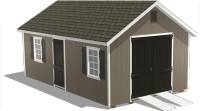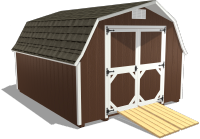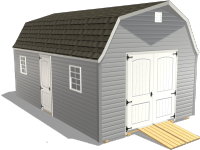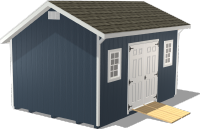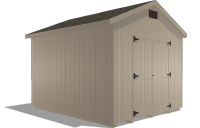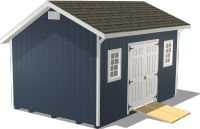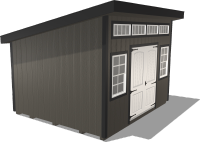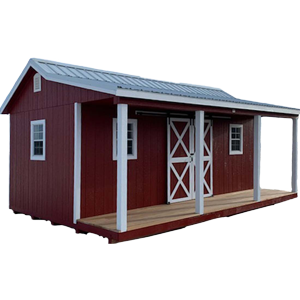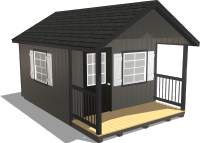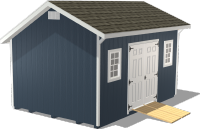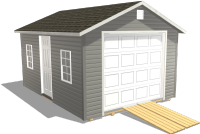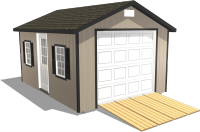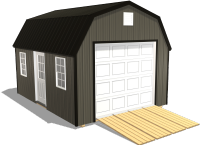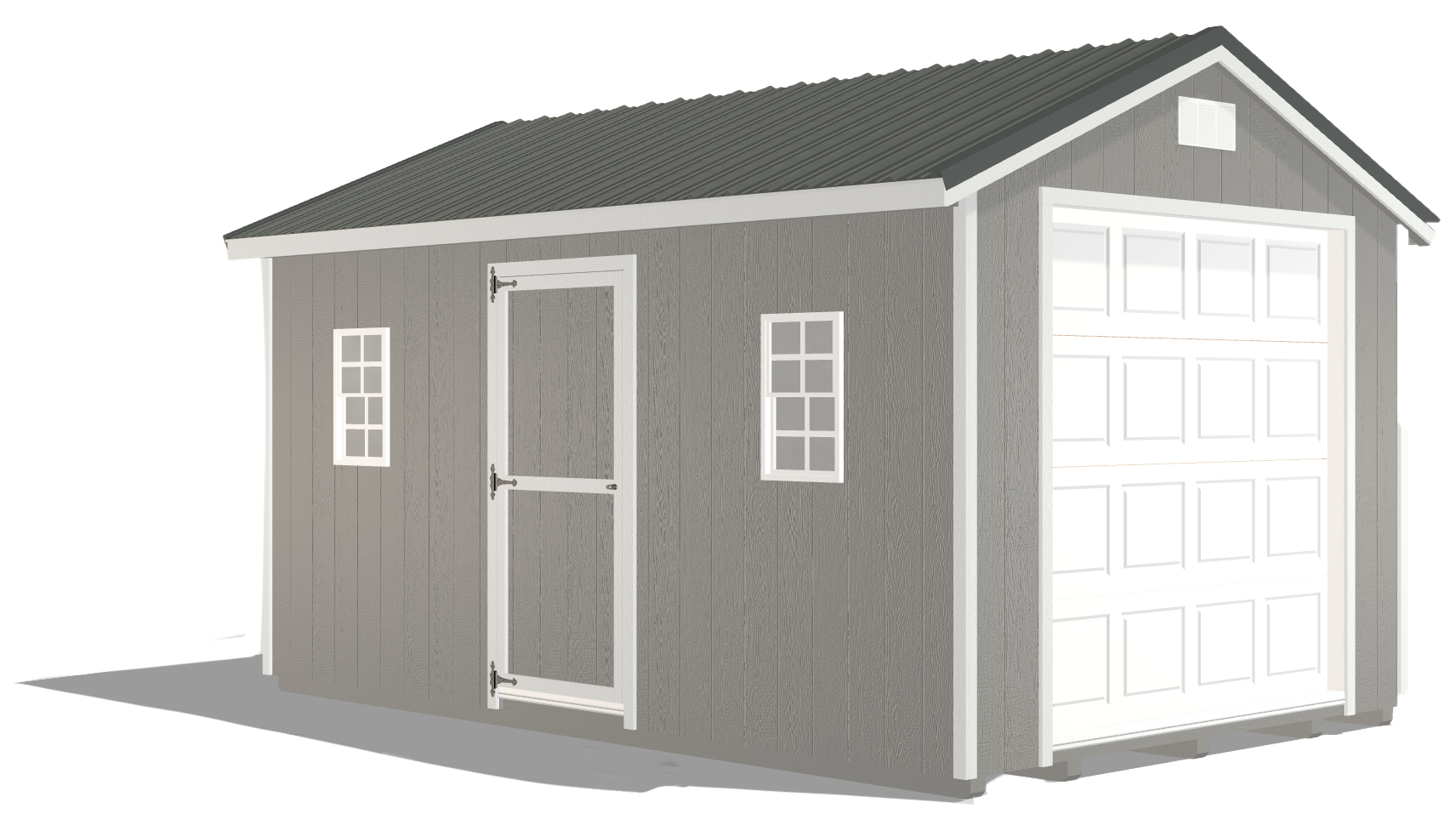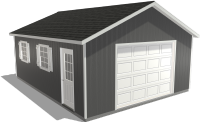Perfect Chicken Coop Roost Designed for Healthy, Happy Birds
by Dakota Storage Buildings, on August 19, 2024

Raising chickens has become a popular hobby due to fresh eggs and the companionship they provide. As you start on this rewarding journey, it is essential to understand the importance of proper roosting in your chicken coop designs. Providing a well-designed roosting environment ensures your chickens are healthy, happy, and productive. Proper roosting supports chickens' sleep, reduces stress, and minimizes the risk of diseases, promoting positive behaviors and overall well-being.
To help you create perfect chicken coop roosting bars, we have put together a set of guidelines and best practices. These include selecting an appropriate perch height and looking for materials that align with chickens' natural behaviors. This ensures sufficient spacing to prevent overcrowding and stress and maintains cleanliness to reduce the risk of disease. By following these guidelines, you can create a comfortable and supportive roosting space that enhances your chickens' health and happiness.
Why Proper Roosting is Vital for Chickens
Creating the perfect roosting environment for your chickens is essential for their overall well-being and productivity. A well-designed roost helps ensure that your chickens get the rest they need, feel secure, and stay healthy. By understanding their natural roosting behaviors and addressing common roosting issues, you can significantly improve your flock's quality of life.
Imitating Natural Roosting Behavior
Roosting is a natural behavior for chickens and is essential for their well-being. Chickens instinctively seek elevated perches to sleep, which helps them feel secure and protected from predators. In their natural habitats, chickens would roost in trees to stay safe from predators. Providing perches in their coop mimics this natural behavior and fulfills their need for safety. Proper roosting enhances their sleep quality, positively impacting their overall health and behavior. Chickens that roost well are less likely to develop stress-related issues, such as aggression and feather pecking. Additionally, a good roosting setup can lead to better egg production and overall flock productivity.
Identifying Common Roosting Problems
Inadequate chicken coop roosting bars can lead to numerous problems. When chickens do not have proper roosts, they may resort to sleeping on the ground, which can cause health issues from increased exposure to dirt and bacteria. Chickens may experience stress, leading to aggressive behavior and pecking. Poorly designed chicken coop roosts can also cause health issues, like foot injuries from rough or narrow perches and respiratory problems due to poor ventilation. Overcrowded roosts can lead to competition and bullying within the flock. A thoughtful approach to roost design can significantly reduce the risk of disease and injury, ensuring your chickens lead a comfortable and stress-free life.
Key Factors for Perfect Roost Design
Choosing the perfect roosting environment involves carefully considering several factors to ensure the comfort and safety of your chickens. Key elements of a proper chicken coop roost design include perch height, material selection, spacing, and arrangement.
Ideal Perch Height
The ideal perch height is crucial for chicken comfort and safety. Perches should be placed high enough to make chickens feel secure but low enough to prevent injuries when they jump down. Generally, perches should be between 18 inches to 3 feet off the ground. This height may need to be adjusted based on the breed and size of your chickens to ensure they can easily reach the perches.
Selecting Safe and Comfortable Roost Materials
Choosing the right materials for perches is vital to ensure the comfort and safety of your chickens. The material you select can significantly impact the overall health and well-being of your flock.

Wood: Wood is highly recommended for chicken perches due to its natural feel and comfort. Unlike metal, wood provides a warmer and softer surface for chickens to roost on. Chickens' feet are designed to grip onto rougher surfaces, making wood an ideal choice.
Advantages of Wood:
- Wood retains heat better than metal, providing more comfortable chicken coop roosting bars, especially in colder weather.
- The natural texture of the wood gives chickens a better grip, preventing slips and falls.
- Wood's slight give can be more comfortable for chickens to perch on for long periods.
Metal: While metal perches might seem durable, they can be cold and uncomfortable for chickens. Metal surfaces can become extremely cold in the winter and hot in the summer, causing discomfort and potential health issues.
Plastic: Plastic perches are not recommended because they can be slippery and do not provide the necessary grip for chickens' feet. Slippery surfaces can lead to foot injuries and falls, increasing the risk of stress and harm.
Optimal Perch Spacing and Layout
Adequate spacing between perches is essential to prevent overcrowding and stress. Ensure there is at least 10-12 inches of space per bird on the perch. Choosing chicken coop designs where the perches are at different heights accommodates chickens' natural preference for varying roosting levels. Proper arrangement helps reduce competition and ensures all chickens have access to comfortable chicken coop roosting bars.
Best Perch Dimensions
The width and shape of perches significantly impact chicken comfort. Perches should be about 2-4 inches wide to allow chickens to grip comfortably without causing foot strain. Rounded edges are preferable to prevent injuries and provide a natural feel. Avoid sharp or rough surfaces that can harm chickens' feet.
Essential Maintenance for a Healthy Chicken Coop
Maintaining a clean and well-kept roosting area is essential for the health and safety of your chickens. Proper maintenance ensures a hygienic environment and extends the life of your coop. By regularly cleaning and inspecting your roosts, you can prevent diseases and create a comfortable space for your flock.
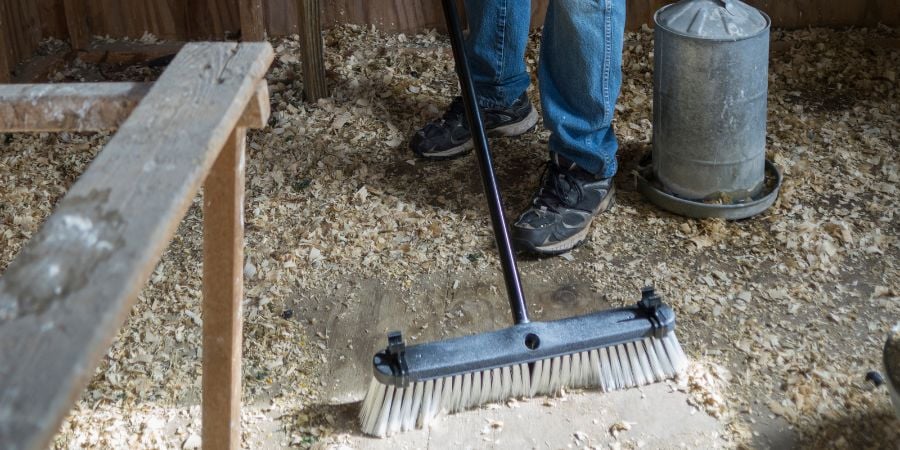
Routine Cleaning Tips
Maintaining clean chicken coop roosts is vital for preventing disease and ensuring a healthy environment. Remove droppings and soiled bedding regularly to keep the area sanitary. Use a mild disinfectant to clean the perches periodically, ensuring all surfaces are free from harmful bacteria and parasites. Keeping the roosts clean reduces the risk of bacterial growth and parasite infestations, promoting better health for your chickens. Cleanliness also helps in controlling odors, making the coop a more pleasant place for both the chickens and their keepers.
Prevent Damage by Inspecting the Roosts
Regularly inspect the roosts for signs of wear and tear. Check for cracks, splinters, or other damage that could harm the chickens. Replace worn-out materials promptly to ensure the structural integrity of the roosts. Routine inspections help maintain a safe and comfortable roosting environment. Ensuring the roosts are in good condition prevents injuries and provides a stable and secure place for the chickens to sleep, ultimately contributing to their overall well-being and productivity.
Creating the Perfect Roosting Environment for Your Chickens
Creating an optimal roosting environment goes beyond just providing perches. It involves ensuring the overall conditions in the coop support the health and well-being of your chickens. This includes proper ventilation, lighting, and temperature control. By paying attention to these factors, you can enhance the comfort and safety of your roosting environment, leading to happier and healthier chickens.
Ensure Proper Airflow and Light
Proper ventilation is crucial to prevent respiratory issues in chickens. Ensure the coop has adequate airflow to remove moisture and ammonia buildup, which can be harmful to your flock. Install windows or vents that can be opened and closed as needed to adjust for seasonal changes and varying weather conditions. Windows also helps provide adequate lighting to maintain a natural day-night cycle, promoting healthy sleep patterns. Natural light is ideal, so positioning your coop to take advantage of sunlight can be beneficial. Supplement with artificial lighting during shorter days to ensure your chickens receive enough light.
Effective Temperature Control
Maintaining a comfortable temperature in the roosting area is important for chicken health. Insulate the coop to keep it warm in winter and cool in summer, preventing extreme temperature fluctuations. Use heaters or heat lamps in the winter to provide additional warmth, and ensure proper ventilation during the summer to keep the coop cool. Keeping the roost area at a consistent temperature helps prevent stress and health issues, such as frostbite or heatstrokes. Monitoring the coop's temperature regularly and making necessary adjustments can significantly improve the comfort and well-being of your chickens.
Additional Resources
For those looking to enhance their chicken-keeping experience, we've compiled a comprehensive list of materials and tools to build your own chicken coop roost along with helpful resources to make the most of your chicken-raising journey.

Materials and Tools Needed to Build a DIY Chicken Roost
Materials:
- 2x4 lumber or wooden dowels for perches
- Galvanized screws or nails to prevent rusting
- Metal or wooden brackets to secure the perches
- Medium-grit sandpaper to smooth any rough edges on the perches
- Weather-resistant sealant to protect the wood from moisture and prolong its lifespan
- Straw, wood shavings, or similar materials for bedding
Tools:
- Measuring tape
- Circular saw or hand saw
- Drill and drill bits
- Hammer or screwdriver
- Level
- Gloves and safety glasses
DIY Roosting Plans
If you find this process daunting or time-consuming, Dakota Storage Buildings has already done the hard work for you. We offer a range of pre-built coops designed with optimal roosting environments in mind. Our coops are built with high-quality materials and attention to detail, ensuring a safe, comfortable, and durable home for your chickens. Shop our coops and let us provide the perfect coop for your flock, saving you time and effort while ensuring the best living conditions for your chickens.
Expert Advice
- Learn How to Train Your Chickens to Roost
- FAQ for New Chicken Owners
- 5 Chicken Roost Mistakes To Avoid
- Chicken Roosting Bars Ideas To Help Your Flock Roost
- Evaluating Best-Fit Quality Chicken Coop Designs
- The Ultimate Guide to Raising Chickens Successfully
Enhance Your Chicken-Keeping Experience With Proper Roosting Solutions
Well-designed chicken coop roosts are crucial for providing a safe, healthy, and stimulating environment for backyard chickens. By considering factors such as perch height, material selection, spacing, and cleanliness, homeowners can find a coop that is a nurturing and enriching space for their flock. With the right setup, you can enjoy the rewards of backyard chicken keeping while ensuring the well-being of your flock year-round. Investing time and effort into choosing the right chicken coop designs not only enhances the quality of life for your chickens but also makes the experience of raising them more enjoyable and rewarding for you. Learn more about how you can provide the perfect chicken coop and roosting space by downloading our free guide.




